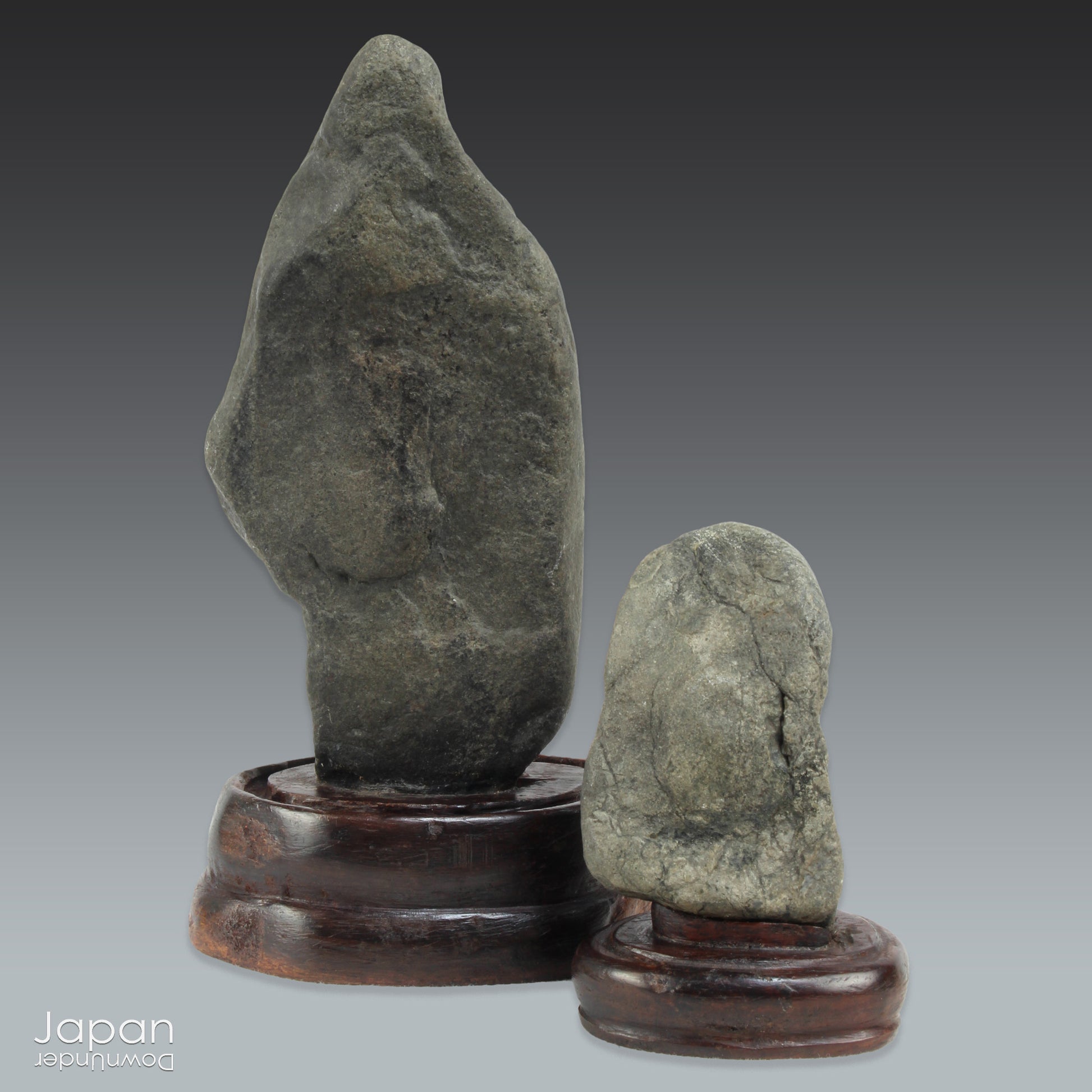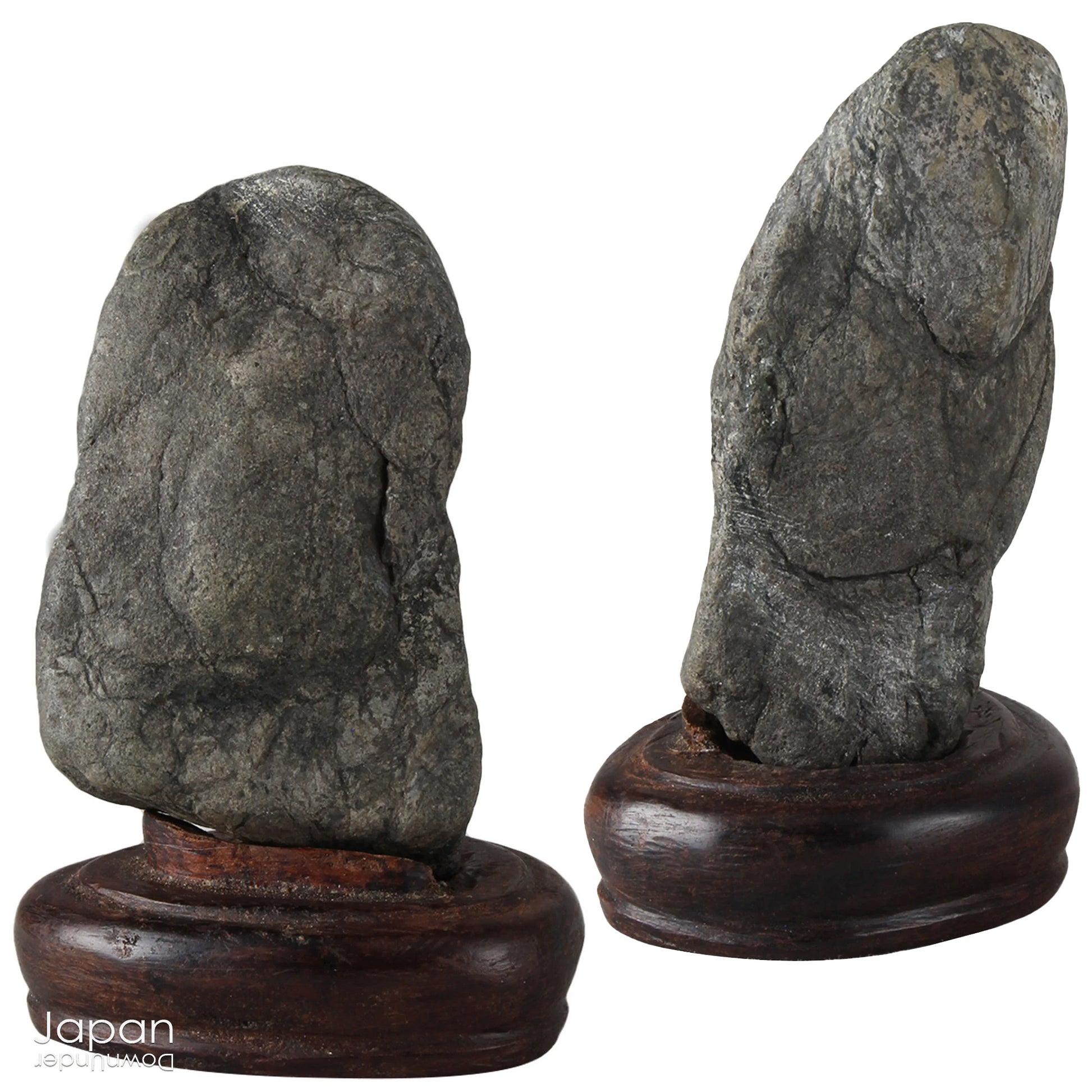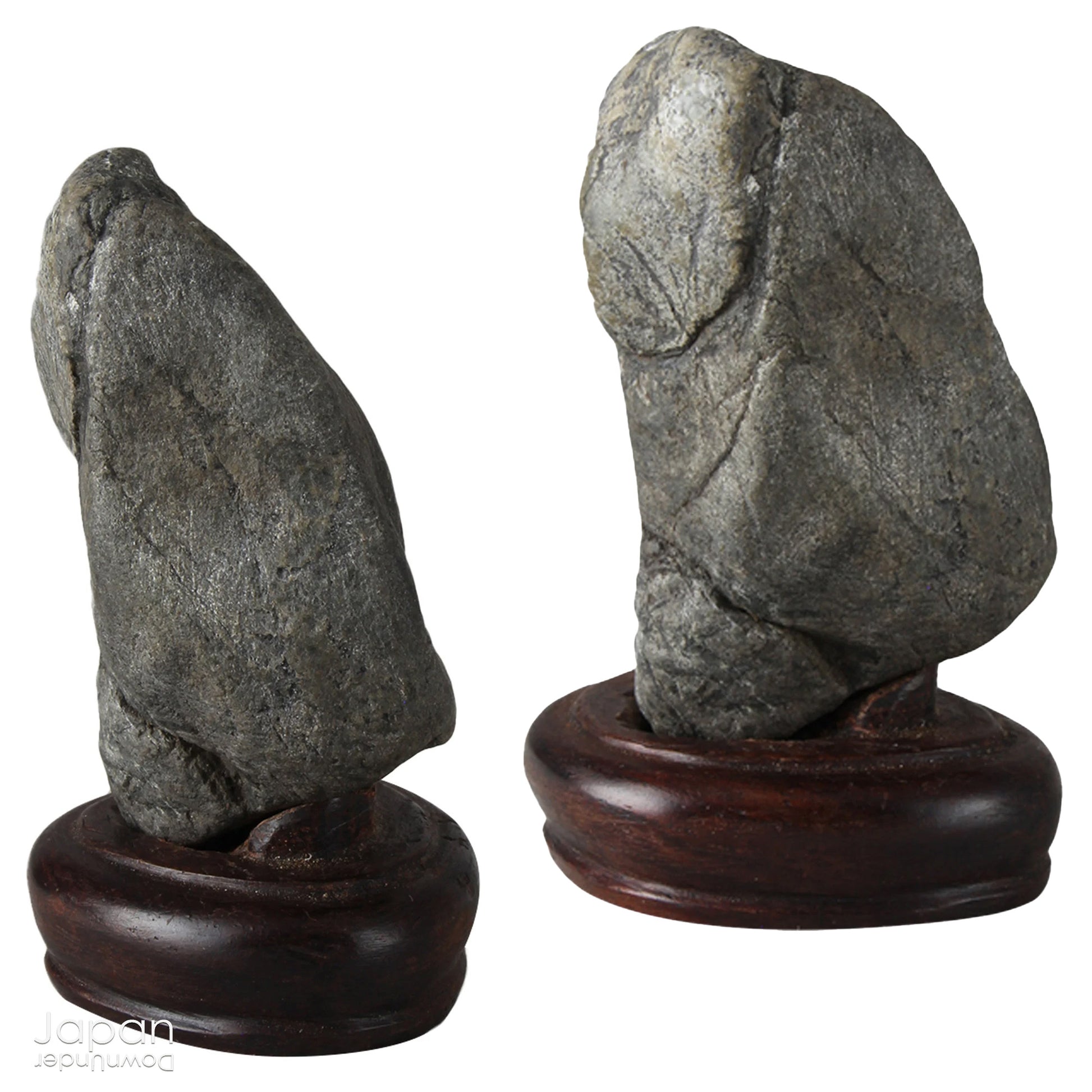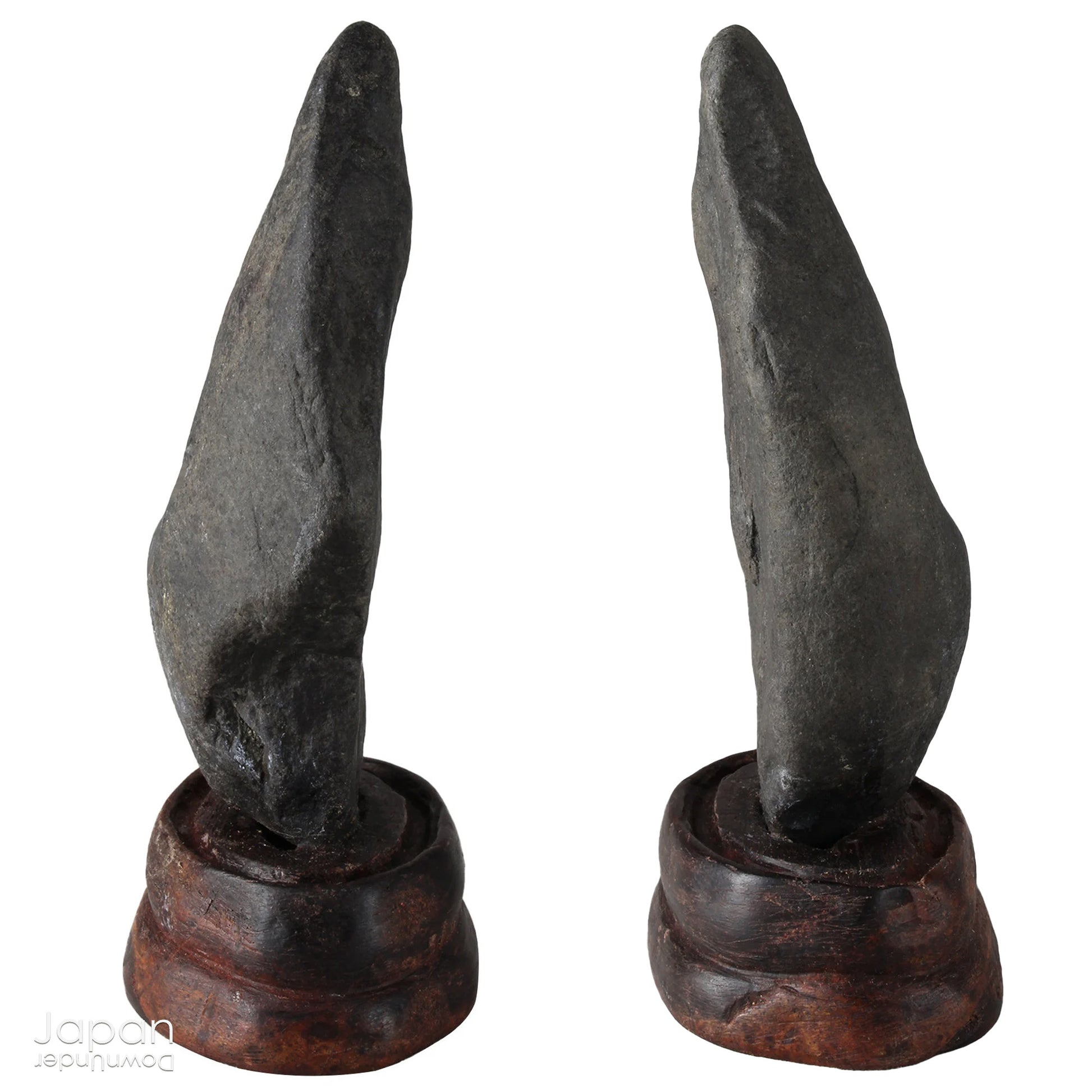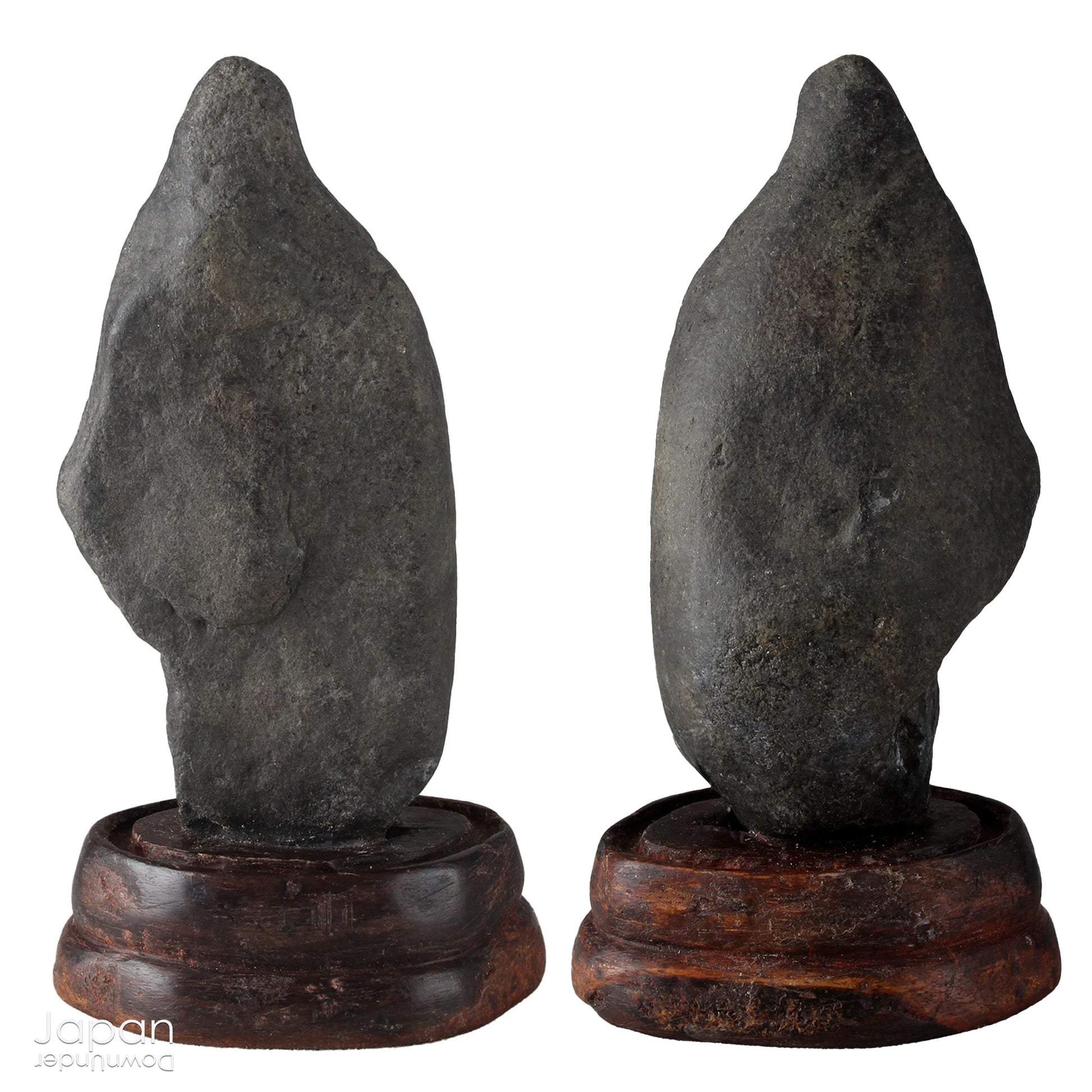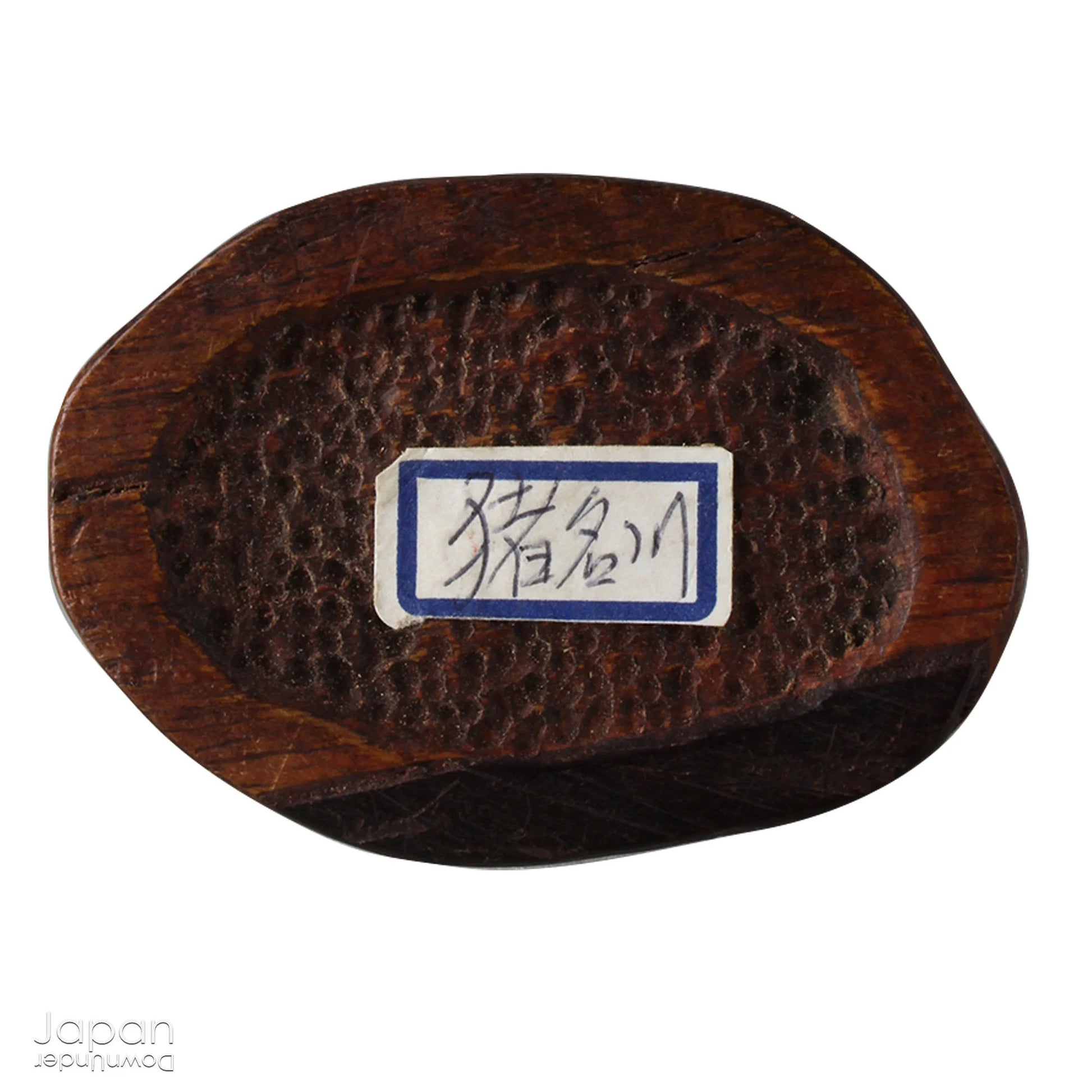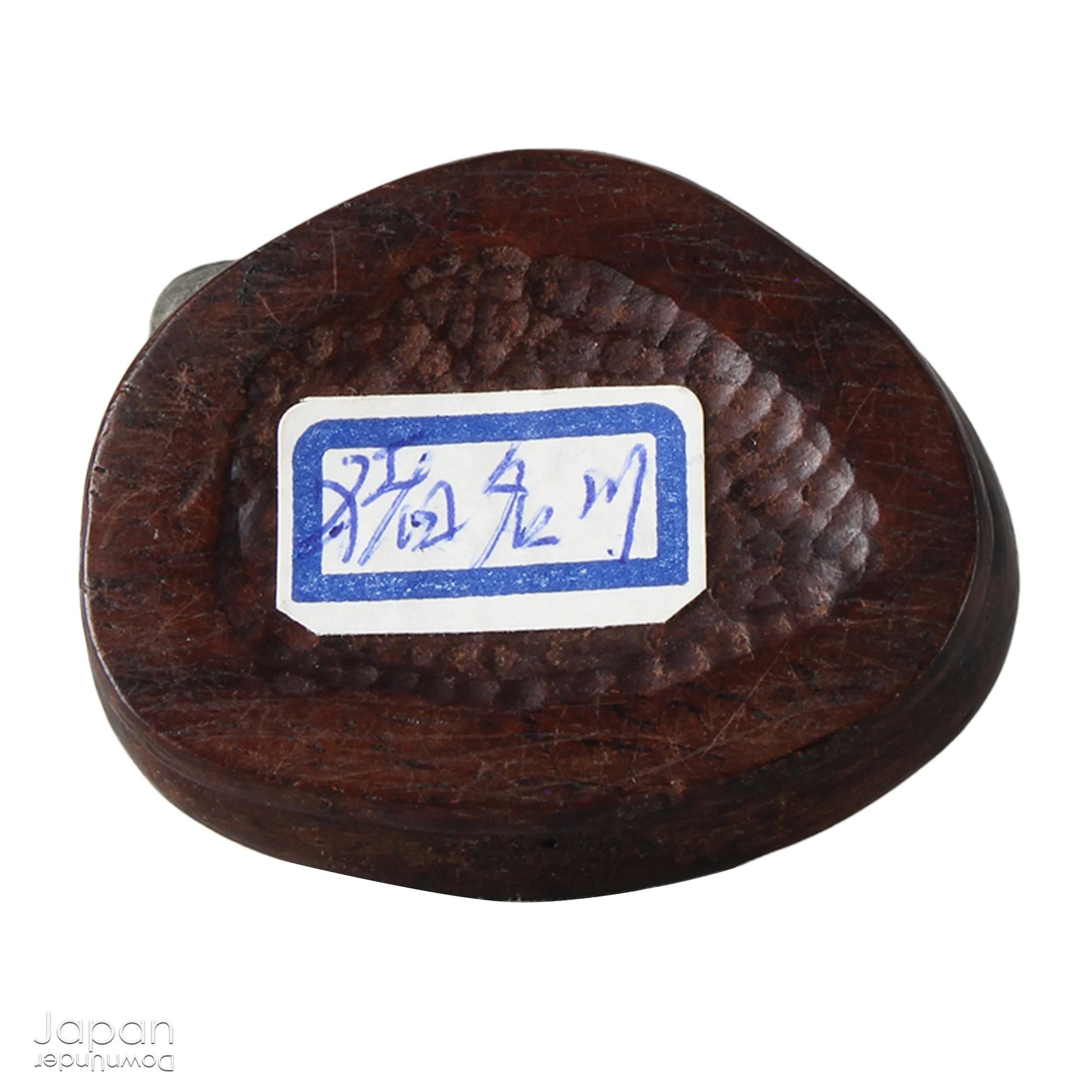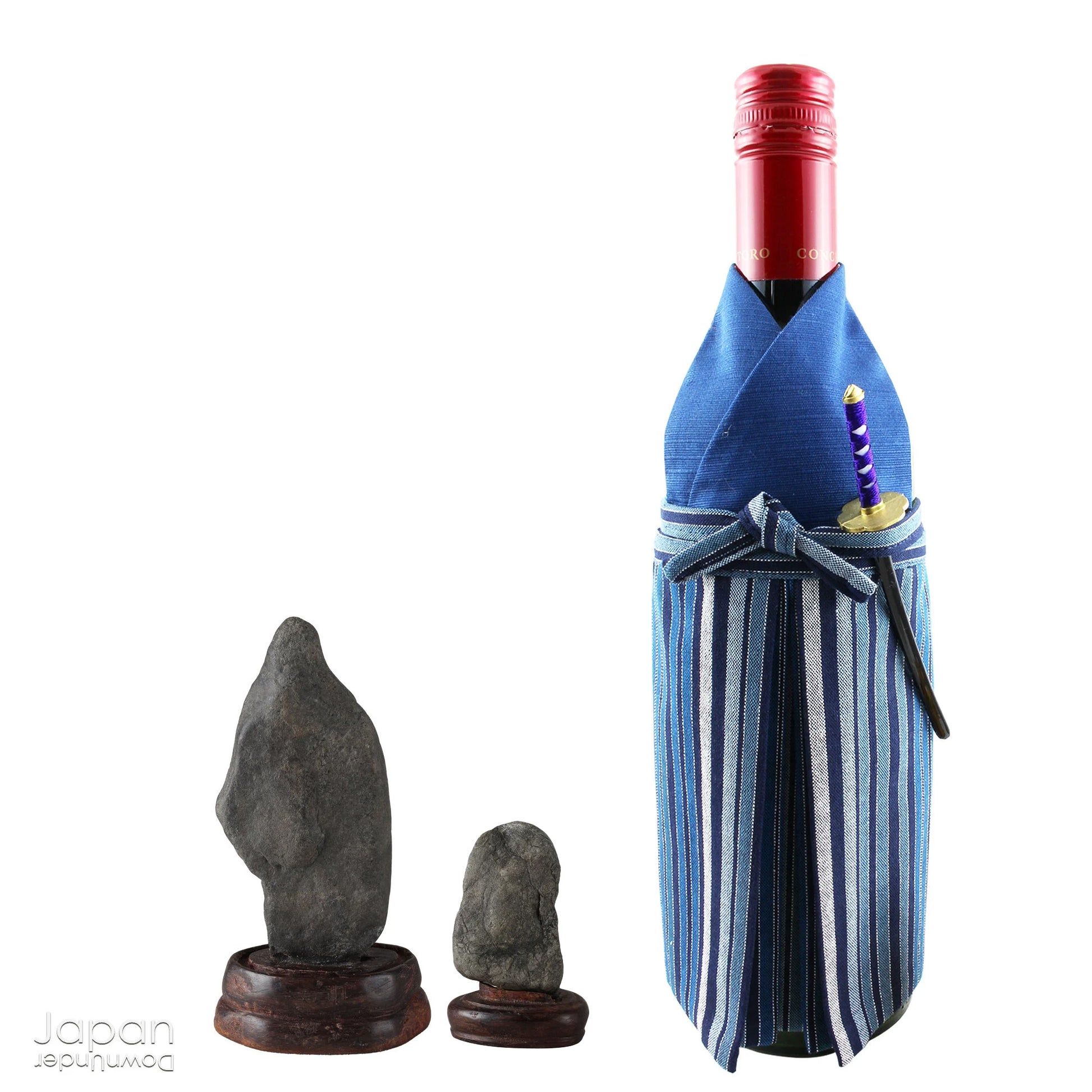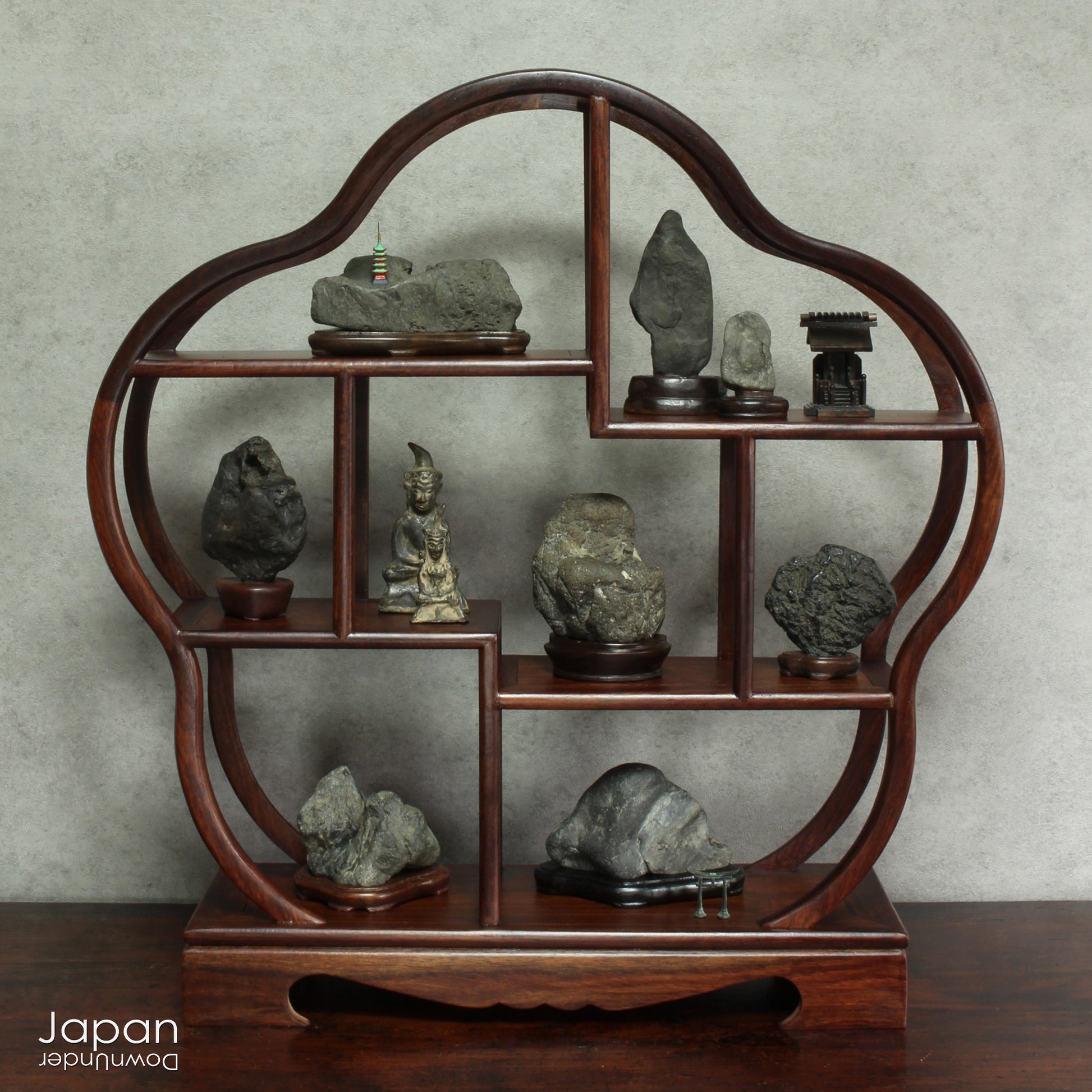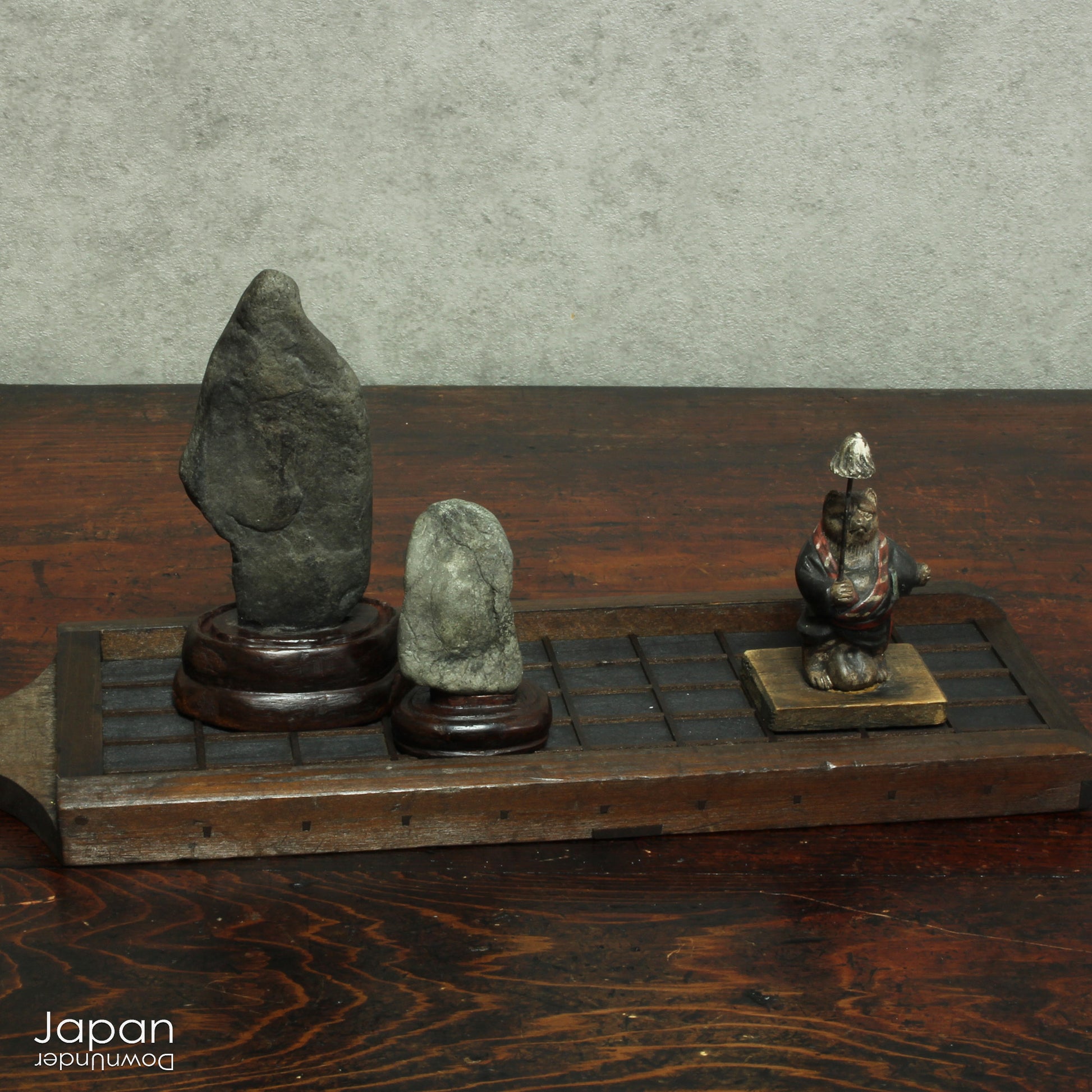JapanDownUnder
miniature japanese suiseki pair on handcrafted wood stands - meditation and power stones
miniature japanese suiseki pair on handcrafted wood stands - meditation and power stones
Couldn't load pickup availability
Love Japanese Style Like We Do
Invite a sense of contemplative calm into your space with this evocative pair of vintage Japanese suiseki - natural stones shaped by the slow, patient hands of time. Rooted in the Japanese aesthetic traditions of wabi-sabi and the reverence for impermanence, these stones are more than mere objects; they are landscapes in miniature, vessels of stillness, and silent poems composed by nature itself.
Each stone, fixed to its own hand-carved daiza (wooden base), radiates quiet balance and subtle grace. Their forms, shaped by the elements and discovered along the banks of the Ina River in Hyogo Prefecture, stir the imagination: the taller stone suggests the silhouette of a solitary apostle, while the smaller evokes a coastal rock emerging from a gentle sea. Yet, as with all suiseki, interpretation is left to the viewer - an invitation to pause, reflect, and simply be.
Dating from the Showa Era (1950s), these ash-grey river stones possess a smooth, time-worn surface that speaks of decades - perhaps centuries - of natural formation. Each bears a label on the base of its daiza, attesting to its provenance. Both stones are in very good vintage condition.
Whether displayed on a wooden stand alongside seasonal blooms or nestled into a thoughtfully arranged shelf, this pair offers a striking accent to any Japanese-inspired interior - a quiet echo of distant landscapes and the enduring artistry of the natural world.
- taller stone measures 12 cm (3”)high x 6 cm (6”) across.
- shorter stone measures 6 cm (2.4") high x 4 cm (1.5") across.
- weighs 240 gm.
(listing for 2 small suiseki stones on wood stands)
SHIPPING INFORMATION
- please read the shipping notes in our shop announcement.
- we use recycle packaging wherever possible and wrap for safety, rather than appearance!
ABOUT OUR VINTAGE AND ANTIQUE ITEMS
We list pieces we feel are worthy of display. There may be scratches, dents, fading and signs of wear and tear. We try to explain the condition of each item exactly, but may miss something.
Information regarding the item and it’s age is obtained from dealers and our personal research. We do our best to give you the correct information but please be aware that we cannot guarantee this information.
Please message us prior to purchase with any questions you may have about our products.
SUISEKI - JAPANESE VIEWING STONES
Between 592-628 the Japanese Empress Regent Suiko received gifts of viewing stones from the Chinese Imperial Court. She liked them so much that she began the tradition of collecting stones in Japan. Viewing stones were also much admired by Samurai warriors who used them for meditation.
Japanese suiseki have a flat bottom and a best side for viewing. Chinese stones are often changed by cutting or drilling holes in the stone, or throwing them in a river for a decade. The Japanese have much stricter rules and all stones must be found in nature without being changed in anyway.
Traditional Japanese stones are classified into a variety of subject categories. There are rugged mountain ranges, mountain peaks from near and afar, snow capped mountains, mountains with waterfalls and lakes, mountain plateaus, coastal rocks with tunnels, human shapes, animal shapes, hut shapes and stones with pictures, to name a few.
Suiseki stones are placed on a daiza, suiban or doban. Daiza are carved wooden mounts that fit the base of the stone. Suiban (ceramic) and doban (copper) are waterproof, rectangular or oval trays, filled with sand. Mats, stands and tables are then used to display the suiseki to create a scene, often using mini bonsai. Bronze or ceramic miniature figures are sometimes used to enhance the theme of the scene and hanging scrolls or shikishi paintings are added to create a seasonal feel to the scene.
Small stands with asymmetrical shelves are also another option to display your suiseki along with other items of value. Miniature landscape suiseki, together with miniature bonsai, teapots, religious goods and small ornaments can create a beautiful living scene with various themes within the display.
WABI SABI
Wabi sabi is the beauty of imperfect things. In Japan, wabi sabi is imperceptible but everywhere: a crack on a teapot, the wood of an old door, green moss on a rock, a misty landscape, a distorted cup or the reflection of the moon on a pond.
The idea of wabi sabi is the contemplation of something that becomes more beautiful as it ages, fades, and consequently acquires a new charm.
Sabi means the delightful contemplation of what is old and worn; the beauty of faded or withered things; things old but elegant; being rusty, all with the impression of peacefulness.
Wabi can mean loneliness or melancholy,the appreciation of a serene life, far from the urban hustle and bustle. It is an aesthetic sensibility closely related to the tea ceremony, referring to the general atmosphere and the objects used during this formal service.
As a sensitivity that leads to happiness, and an acceptance of the beauty of simple and natural things, wabi sabi is a daily way to experience little joys. When admiring a landscape, an object, or a painting, during a conversation with friends or when sharing a moment with a good company, everyone can feel the notion of wabi sabi.
Share











